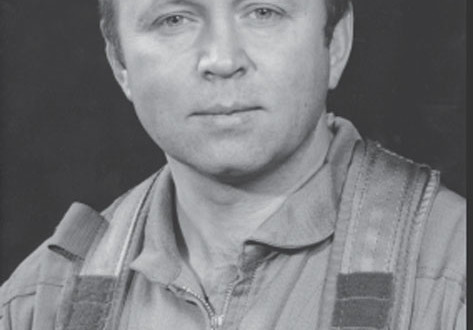BY INA BERTULYTĖ BRAY
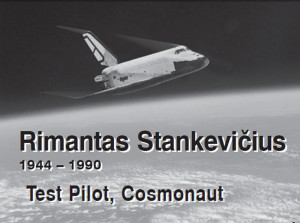
SEPTEMBER 9, 1990. CNN SHOWS A JET FIGHTER slicing the TV screen, vanishing, then — a ball of fire.The announcer calmly reports that a Soviet Sukhoi SU-27 airplane crashed at an air show in Italy, killing the pilot and a bystander, injuring eight.
Another disaster with a Soviet plane, but this time the flyer is a Lithuanian, Rimantas Stankevičius, a test pilot slated for space flight.
The name of this extraordinary man is not known by many, but it is rapidly gaining a place of honor next to Darius and Girėnas in the annals of Lithuanian history. The story and untimely death of Rimantas Stankevičius, however, came at a time when the Soviet Union ruled his country of birth and every aspect of the Soviet space industry was shrouded in top secrecy. This was a time when writing about him and honoring him could have borne serious consequences both for the author and for the pilot. Only after the crash was it possible to acknowledge with any depth his exceptional skills and achievements.
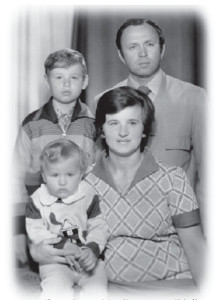
The exuberant summer of 1990 brought this remarkable pilot and gentle human being to Seattle, Washington. That was the summer of the Goodwill Games, the Everett Air Fair, and of course the emergent independent Lithuania. Rimas, as he liked to be called, and his partner Sergej Tresviatskij flew their SU-27 jets (akin to the American F-15) over the opening ceremonies of the Goodwill Games, and a few weeks later they returned for the Everett Air Fair. Their historic presence at these events signified the first time that Soviet aircraft had officially penetrated U.S. airspace.
It was exceedingly important for Rimas to meet the local Lithuanians, and as community president he sought me out. And so, those Lithuanians who wanted and were able to, enjoyed him on a number of occasions.
Whenever possible, Rimas and I spent hours or even just minutes talking, touching the essence of the day or the past. Rimas gave me a glimpse into his professional and personal life — a life that experienced the positive but also endured the negative apex of the Soviet system. He also talked of the relentless pressure by some in the emerging Lithuanian government to have him return and serve his homeland. It amazed and hurt him that he found so little understanding for his quest to go into space and following that, join in the rebuilding.
Although Rimas was serving in the Soviet air and space program, his commitment to his country of birth ran deep and ultimately would demand a price. He was born on July 26, 1944, in a summer of destruction, chaos and tragedy that was Eastern Europe. Thousands had been fleeing west from the Soviet onslaught, but Rimas’ eighteen-year-old mother Marija, remained. War had separated her from her husband Antanas, and she sought safety on a farm outside her hometown of Marijampolė. But safety was not to be found and Rimas entered the world surrounded by warring armies, gunfights, explosions, and fire.
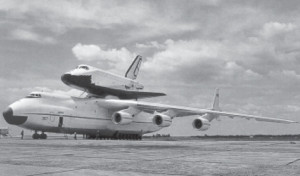
for a sub-orbital test flight. Rimas piloted this spacecraft a total of 16 times.
Rimas grew up in the quiet town of Marijampolė, the eldest of three children. Already in early childhood, space fascinated him. He would listen to the static on the old radio, imagining that these sounds emanated from outer space, and in his fantasy he was there.
Near his parent’s home was an airfield where, mesmerized, he would watch parachutists descend. This sport so intrigued him that still in sixth grade, he organized a parachutists club. These 13–14 year old boys became knowledgeable in the theory of aerodynamics and every aspect of parachute jumping, to the degree that they received permission to be trained by professionals and practice jumping from the official jump tower. Rimas, however, had to wait a year until he gained sufficient weight! He made his first parachute jump from a plane, while still in high school.
In 1961, shortly before graduating, Rimas met Juozas Žilionis, a student pilot who opened to him the world of flight. From that defining moment, Rimas’ life ambition became unwaveringly clear and he began to prepare for it physically and mentally. He had learned that a spinning aircraft can spell catastrophe for pilot and plane. So, to condition himself he would spin 10 minutes, 15 minutes and more to still be able to walk reasonably straight. He had prepared well. Years later, when training in centrifuges, he could withstand gyrations for more than six hours. This ability was exceedingly significant when he sat in cockpits of planes that during flight tests or mishaps were spinning out of control. His sense of balance would remain intact, allowing him to correct and control the jet. No other cosmonaut was able to surpass him.
After high school, in 1962 Rimas enrolled in the prestigious Chernigov Air Force Flight College, but that nearly did not happen. The competition was stiff, over 1000 prospective students applied for the 170 spots. To be accepted, he had to pass a battery of tests, including examinations in physics and mathematics, and all in Russian. Since his primary language was Lithuanian, however, that became a problem. Here again Juozas Žilionis, his mentor played a decisive role. He organized fellow students to campaign and persuade the powerful head of admissions to make an exception for this talented young man. This was risky but incredibly the ploy worked. Rimas was accepted.
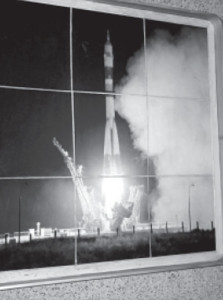
Fellow students quickly chose him as their leader for his personality, but he also began to garner honors and recognition for his skill. To be selected as first to fly a plane independently of the instructors, for example, was an accolade and during those college years he was consistently first in the cockpit.
1968 brought another significant change into his life: He married Irena Sodaitytė, “the girl next door” from Marijampolė. His first son Gintaras arrived on January 1, 1970, and eight years later, on October 9, 1977, Algis was born. In Irena, Gintaras and Algis, Rimas found strength and a vital and safe emotional haven in a world where safety was so elusive. And in this tiny “Lithuanian island” that Irena had created in their apartment, he could assuage his never-ending homesickness. (After the crash, Irena moved the family to Kaunas, but had little time to enjoy her homeland. She died of cancer a few years later. Gintaras became a pilot but changed careers and is achieving considerable success. Algis enjoys skydiving in addition to a responsible managerial job.)
Following graduation in the early 1970s, Rimas served in Poland, Egypt, and Turkmenistan attaining the rank of major in the Soviet Air Force. He became one of the best young Air Force pilots, but his ambition was to test planes, not simply pierce the skies with them, and for that he had to leave the Air Force. Again it took intensive effort, with requests addressed to the highest levels, but he was released from active duty (and Brezhnev’s uniform, as he liked to say), and in 1973 began training at the USSR Ministry of Aviation Industry Test Pilot School at Zhukovsky (some 30 miles outside of Moscow). He graduated cum laude in 1975 and immediately was invited to become instructor and test pilot at the prestigious Gromov Flight Research Institute, also at Zhukovsky — another not readily granted accolade.
In order to understand the limits to which Soviet test pilots or cosmonauts were pushed in space or on the ground, one must understand the context in which they worked. In the early 1990s, glasnost opened Soviet archives and doors to their space industry. Western air and space magazines found a cornucopia of material and disparaging articles began to appear about the inhuman research and testing procedures and the seemingly ubiquitous disasters in the Soviet flight and space programs.
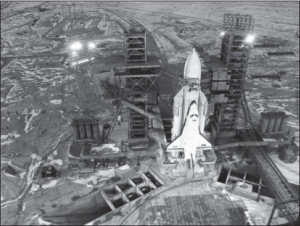
James Oberg, a manned-spaceflight expert with the U.S. Shuttle program, quotes a Russian official at the Baikonur Cosmodrome in Kazakhstan: “If you only knew of all the explosions and deaths, you would be horrified at the size of the deception.” In his diary in one 12-month period in 1982, Rimas lists with cryptic explanations the deaths of 30 pilots or crew. When I asked Rimas about such disasters, with a wave of his hand he replied that he could name at least 50 of his friends (pilots or space professionals) who were already gone.
Invariably the system placed greater value on the machine than on the human being and to the end Rimas could not escape that. On March 17, 1986, as test pilot and engineer he was assigned to test fly the MIG-29. His task was to determine the cause of and find corrective procedures for the devastating spin that in 1984 had resulted in the crash of two planes, killing the pilots. With Rimas in the cockpit, again the aircraft began to spin violently. When the MIG-29 had reached a dangerously low level and no alternative remained, Rimas ejected. His life was saved, but not the plane. In his diary, he recorded with precise analytical detail the flight protocol he had followed, and the investigative commission determined this to be correct. Nevertheless, he barely avoided being tried in court and received severe reprimands for looking after himself rather than the plane. Later it was established, that technicians had erroneously connected some electrical systems that caused the disastrous gyrations.
Years later, when he related this incident to me, the sense of betrayal was still so evident.
Still, he continued to fly “on the edge:” 23 km into space, at almost three times the speed of sound, one time dropping 7 km before regaining control, another time at supersonic speed but without a cabin cover. He risked his own life in these extraordinarily complex maneuvers in order to find methods and procedures that would increase the safety of the ordinary pilot. These procedures for a decade stood as basic principles of flight, and who knows how many lives his discoveries saved.
The years of intensive test flying, turned Rimas into a first class test pilot, trusted to perform the most demanding flights, accruing qualifications and certifications ahead of the proscribed and normally strictly adhered-to rubrics. By the time of his crash, he had tested some 64 different fixed-wing, including supersonic, aircraft and helicopters. Even pilots, unless they were test pilots, had difficulty grasping the complexities of his flying. And, as Rimas told me with a wink and a smile: “If it has wings, I can fly it.”
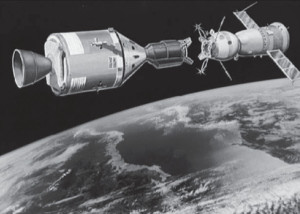
1974 provided the long-awaited moment when Rimas was accepted into the cosmonaut-training program. His two parallel passions, that of test pilot and cosmonaut-in-training, would now consume his days to the end of his life.
Already by 1976, he and four others were selected to be the first pilots of the “Soyuz” space vehicle and later they were to test fly and sub-orbitally fly the reusable spacecraft “Buran,” the Soviet version of the American Space Shuttle. Of these first five pilots, however, three were no longer living by the fall of 1980. Victor Bukrejev burned to death in a MIG-25 (1977); a MIG-23 claimed the life of Aleksandr Lysenko (1977); and Oleg Kononenko crashed into the South China Sea while taking off from an aircraft carrier (1980). In his diary, Rimas laconically had put down the causes. Only Rimas and Igor Volk remained.
Rimas received the coveted cosmonaut/test pilot designation on February 12 ,1982. From that point on, it was just a matter of time before he would go into space — or so it seemed. Rimas wrote in his diary that already on June 23, 1981, Minister I. Silajev had issued a directive, selecting the next cosmonauts/test pilots. This time Rimas was to be pilot, with Aleksandr Shchiukin as copilot and Igor Volk — pilot and Anatoli Levchenko his copilot. But again, that was not to be: Aleksandr Shchiukin crashed in 1988, flying a SU-26 and Anatoli Levchenko died of cancer in 1988, after returning from the space station Mir.
By November 23 and 30, 1982, Rimas had passed all the examinations for flying the “Soyuz-T” and the “Saliut” space vehicles. The space shuttle “Buran” by now was reaching the testing stage and Rimas became a regular at the Baikonur Cosmodrome, the world’s largest space launch complex in the then Soviet Republic of Kazakhstan. Endless training continued but now in the analogue of the “Buran,” in ground simulators as well as in various jet aircraft that served as training and support fleet for the “Buran.” By the time of their first flight on November 10, 1985, Rimas and pilot Igor Volk had logged over 60 hours in the “Buran” cockpit, and an additional 3,200 hours in various simulators.
With Igor at the controls and Rimas as copilot, this epic first manned sub-orbital flight of the “Buran” lasted 12 minutes. As Rimas remembered in his diary, even jaded Baikonur personnel, who for years had witnessed spectacular launches, were jubilant when this spacecraft successfully took off and landed. In spite of strict secrecy, it seemed that half of the town had sat on rooftops and watched the “Buran” descend. And when they emerged from the cabin, Rimas and Igor, found themselves lifted onto the shoulders of the assembled ebullient technicians, engineers and test pilots. Out of the 24 “Buran” flights that were undertaken in the coming years, Igor and Rimas flew 16, including the autopilot landing in 1986.
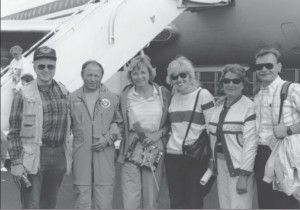
Rimas was present at the control center when on November 17, 1988, the unmanned “Buran” landed after its maiden orbital flight. It was at this time that the Soviet press for the first time identified Rimas as the next pilot to fly the “Buran.” His dream of space flight seemed to be approaching reality. Disaster struck again, however. The cockpit was seriously damaged while still on the ground, causing repeated delays. Gradually, as the USSR disintegrated and economic uncertainties ensued, a manned “Buran” flight became postponed indefinitely.
Parallel to Rimas’s preparations for orbital flight in the “Buran” continued the training for the space station “Mir.” In February of 1989, he was selected to be one of three cosmonauts for the “Soyuz-T” mission to that space station. Rimas’s stay in space was to last one week, with lift-off in February of 1990. But as with the “Buran” flight, this mission eluded him as well. Mechanical problems plagued the “Soyuz” rocket.
By the end of the decade, his chances of being selected became increasingly dim and in that summer of 1990, he revealed to me another formidable obstacle. He was Lithuanian, a man from a break-away republic. For years, even under intense pressure, he had never obfuscated his origin. That pride in his background, he felt, contributed to the fact that repeatedly he had been and continued to be passed over for space flights.
Wasted seemed the years of superhuman training and preparation, of physical and emotional pain in pursuit of his passion. In his diary, he faithfully recorded significant dates, historic events, minute details of various flights, details that were forbidden secrets in those days. But he also unburdened his heart. Blatant protectionism in the selection of cosmonauts for space flight, perpetual disagreements with Igor Volk in the cockpit and on the ground, mismanagement in areas that affected his work, his salary; administrative responsibilities that by default fell to him (I witnessed the stress on him in Seattle when he was forced into negotiations with local authorities while his superior went shopping!) He wrote of bitter and absurd discords with bureaucrats and functionaries who directed his career, if not his life.
With economic collapse, it became a priority for the Soviet government to make the state-of-the-art fighter planes available to Western markets. Cosmonauts and test pilots, including Rimas, now were turned into exhibitors of the prowess of these war machines. To the awe of thousands of spectators, Rimas and Sergej would crisscross the skies in their SU-27s and finish with their heart stopping trademark maneuver, the “loop of death.”
The Everett Air Fair that August of 1990 promised to be very well attended, and Rimas and I wondered how after the flight, he would find the local Lithuanians in the crowd. In jest I suggested that I wave the Lithuanian flag. “Būtinai!” (“Absolutely!”), he said.
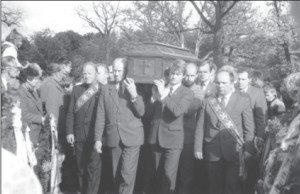
resting place at the Aukštųjų Šančių Military Cemetery in Kaunas. The pallbearer on the right of the casket is current Lithuanian President Rolandas Paksas, a flyer himself.
My reaction was: “Rimai, this is insane!” “Oh no,” he smiled, “do it!” I could not dissuade him, and when later he emerged from his jet hundreds of yards away, he saw our enthusiastic waving of the tricolors. He wanted the world to see that he was Lithuanian.
He had maximum clearance from the Soviet government, yet he knew that on both sides of the Atlantic, Soviet surveillance of him was omnipresent and powerful. At one point, as we were walking across the tarmac, Rimas turned to me after having pointed out an individual and under his breath said: “This man I fear.”
On the morning of his departure, I came to see him off. For a myriad of reasons he had not yet finished packing and now was called out for some urgent administrative tasks. I offered to help. He left the room. I knelt before a suitcase and quickly began to stuff it. Suddenly, the door virtually exploded. A Russian almost tumbled in as he rushed inside, with Rimas behind him. Unmistakably, Rimas’s companion expected to catch me at — something. When the scene before him turned out to be quite mundane, I physically felt the relief in Rimas, and the almost angry disappointment in the Russian.
Rimas and Sergej waved goodbye to the gathered well-wishers at the now-quiet airport. The two Sukhoi’s roared into the skies, returned and circled low as if to embrace once more those of us who had taken them into our world, and then they vanished over the crowns of the trees.
Few who had met Rimas could avoid being deeply touched if not affected by him. I witnessed that as he associated with the aces of American flight, the Blue Angels, or with anyone at any level connected to these events. His superb professionalism, his warmth and humility, his compassion for those around him, his lifelong sense of justice, his deep and abiding love for his family and for Lithuania, all that and much more defined his being.
Early in September loomed the annual Salgareda Air Show near Treviso in northeast Italy. Another pilot had been sent to demonstrate the SU-27. However, shortly before the event, Mario Ferrari invited him for a flight in a World War II airplane. It crashed, killing the Italian and severely injuring the Russian. Rimas became the replacement.
For unexplained reasons, Rimas was ordered to demonstrate solo and not the display routines that he had perfected in partnership with his trusted friend Sergej Tresvyatskij. To alter a flight program in a matter of days is extremely complex. In addition, Rimas was made to fly not Sukhoi Nr. 2405, the aircraft that had become almost an extension of his body, but Sukhoi Nr. 1614, a plane with mechanical problems in its recent past.
Personnel tensions added to his concerns. The Russian delegation of 37, bore him considerable resentment. Before Seattle, they had vehemently opposed that trip and as group leader, Rimas had not included them in the Seattle contingent. In August Rimas told me that in July, while his family had been in Seattle for the Goodwill Games, one of the individuals left behind, had taken revenge and had tried to set fire to Rimas’ apartment in Zhukovsky. He missed and damaged the neighbor’s unit instead.
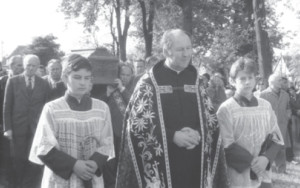
The delegation to Salgareda, consisting primarily of bureaucrats, their friends and families, arrived as the “support team.” Consequently, Rimas was left without an alternate, a doctor, a supervising engineer, a video operator, or a flight observer who is a pilot. The presence of the latter is vital as he visually follows the flight intricacies from the airstrip and calls in corrections even before the pilot in the cockpit might be aware of problems. Although Vladimir Shatalov, the Assistant Director of the Flight Institute, had assumed the responsibilities of flight observer, years spent behind the desk had not prepared him to critically evaluate the dynamics of precision flying.
On a sunny September 9, 1990, at 5 p.m, Rimantas Stankevičius lifted off for a 30-minute program in the skies of Northern Italy. At 5:10 p.m, instead of looping skyward, his SU-27 Nr. 1614 skidded and disintegrated in a ball of fire. Some 40,000 spectators watched, CNN and the world watched. And thus, the circle closed. Rimantas Stankevičius had entered this world surrounded by flames and in flames his life ended.
Michail Markov was the only test pilot and expert witnessing the flight from the airstrip. When interviewed by Edmundas Ganušauskas, a Lithuanian pilot and journalist who has written extensively about Rimas, he emphasized that he could not understand that Rimas, the quintessential pilot, who had flown flawlessly the day before and always was thoroughly prepared for maneuvers, now seemed to be constantly correcting the flight parameters. During the “loop of death” maneuver, the plane obviously did not responding properly, and after reaching what Markov believed to be the zenith, but in all probability was not, the jet descended sluggishly, veering to the right.
That same observation was made by the Italian newspaper La Nuova after examining a film taken by an amateur. Ganušauskas felt that if Sergej, who was familiar with every second of the maneuver, would have held the radio microphone in his hand instead of Shatalov, he immediately could have analyzed the problems and guided Rimas. The Black Box as well revealed various unexplainable discrepancies. At the control tower, the recording system malfunctioned, so there is no voice record from the flight.
To his final moments, Rimas remained a hero. According evidence in the instrumentation, he considered ejecting but that would have propelled the jet into the sea of spectators. Instead, according to Sergej’s analysis, with superhuman strength he tried to stir this projectile away from the crowd. This process consumed precious seconds and made ejection impossible. His charred hand was found still clenching the stirring lever.
Immediately the Italian government appointed a commission consisting of two representatives from each country and chaired by an Italian attorney. Predictably, each side reached different conclusions: the Italians blamed the crash on mechanical problems, which were also substantiated by other pilots and mechanics, and the lack of adequate preparation and support on the part of the Soviet organizers, particularly of the flight observer, V. Shatalov. The Soviets, following the well-established policy of denial, distortion, and finding a culprit, decided on pilot error, initially erroneously even including alcohol. The definitive answers to the cause of the crash, however, as Ganušauskas writes, were “soaked into the soil of Northern Italy.”
And, the abject insensitivity of the Soviet system to human needs continued: Irena Stankevičienė learned of the death of her husband through “Voice of America,” by way of her sister who lived in Kaunas! Bureaucratic tangles followed. For days Rimas’ remains were held back in Italy for conflicting and unjustifiable reasons. It took the fury and persistence of Irena and other widows and friends at the compound in Zhukovsky, before the Soviet authorities relented.
Tens of thousands of Russian mourners paid their final respects at the memorial service in Zhukovsky, mourners who understood well the sacrifices that the Soviet space industry demanded. Then two planes took off for Kaunas, one carrying the remains of Rimas accompanied by his family, the other — high officials, cosmonauts, co-workers, and friends. The casket was taken to Marijampolė for a final farewell in his hometown. Then, back to Kaunas. Thousands passed by the casket at the Vytautas The Great War Museum. Thousands again crowded the gravesite in the Aukštųjų Šančių Military Cemetery. And, as Father Ričardas Mikutavičius was completing the final rites, a squadron of planes flew over in final salute to a fallen and well-loved comrade. Rimantas Antanas Stankevičius was laid to rest only steps away from Lithuania’s other heroes of the sky — Darius and Girėnas.
 DRAUGAS NEWS Lithuanian World Wide News in English
DRAUGAS NEWS Lithuanian World Wide News in English
